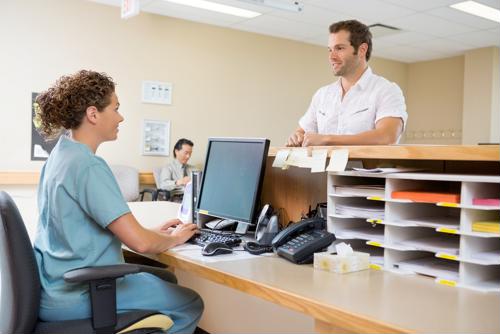
Seeking cures to the ills of data in the health care industry
By Donna DonnowitzJuly 27, 2015
When it comes to helping a sick patient, the best physicians know the importance of isolating the problem and developing a treatment plan that is responsive to the patient's needs. The information technology problems of the health care industry are no different, with each unique facility requiring its own diagnosis and prescription. In fact, health care IT is more important now than ever, thanks to a growing volume of files that are now stored digitally. Furthermore, data like lab results, electronic health records and correspondence between physician and patient, must be carefully monitored to satisfy customer demands and in order to comply with federal regulations.
These complicating factors make IT upgrades a more complex operation, but a bit of extra preparation will help ensure these procedures are successful. Carefully selected upgrades can act as the panacea to several of the problems facing your health care facility's IT operations, so it pays to be well informed regarding the common symptoms of outdated technology and how to deal with the problem at the source.
Security risks must be sent to triage immediately
One vital rule to follow when updating a health care facility's data operations is to treat potential data breaches like a dangerous disease. Like an infection, data problems that begin in one section of the data center can quickly escalate and negatively affect the rest of the network. Failure to stop a data breach from occurring will make it extremely difficult to regain the trust of patients and clients, meaning that a single security failure could result in significant revenue losses.

An increasingly complex health care industry needs dedicated digital solutions.
Members of IT management for the health care industry would be remiss to believe that their facility would never come under attack by hackers. In reality, seemingly innocuous pieces of personal info like addresses and Social Security numbers that motivated recent hacks on the UCLA Health System, are extremely valuable, according to USA Today. The same information stored on your company's servers makes your systems a target and this threat must be accounted for immediately as soon as red flags - like evidence of unauthorized outside access - appear.
Your facility can also preempt security issues by investing in hardware designed to give your business extra support when it comes to maintaining your network's defenses. Choosing tech that boasts multiple means of security, including several forms of encryption, peer authentication and the ability to filter IP addresses, will help to limit a hacker's means of accessing your data.
Updated network technology can cure connections between campuses
More and more hospitals are merging, according to The Chicago Tribune, turning single facility operations into campuses. Reconciling the two information systems will take time, but that transition can be streamlined by uploading data from each facility to a single network, then sharing access to that single network across the multiple buildings that are now using this information.
The same approach can be used to organize and operate critical pieces of technology as well. Installing a high-performance remote console server makes it a cinch for health experts to operate any device with a serial connection over the Internet. In addition to helping multiple facilities merge their data together, ramping up network connections will help health professionals at each location take advantage of the entire wealth of the resources available via the network.
Disaster recovery acts as preventive medicine
Sometimes the best way to treat a sickness is to prevent it from happening in the first place. Taking steps to change diet and lifestyle can help make the human body less vulnerable to sickness. Similarly, small changes to network operations or the habits of the IT team can have a big impact on preventing a data disaster from occurring in the first place.
"A comprehensive disaster recovery plan must be in place."
Healthcare IT News stressed that hospitals and other health care facilities will have difficulties pushing into the future without a way to maintain high availability of their data in case of an emergency. Whether this solution occurs on-site or off-premise, a comprehensive disaster recovery plan must be in place, lest your facility suffer a critical system failure.
Storage solutions must be tailored to the needs of the patient
Just like with dosage, there's no one-size-fits-all solution when it comes to measuring how much or what kind of data storage your health facility needs. Your IT team will have to carefully evaluate their needs and risks before reaching a decision. More facilities, especially small to medium-sized clinics, have begun to favor the colocation route. Larger operations, such as research hospitals with mountains of collected data to archive, may instead seek a hybrid solution that keeps the most private data on-site. Ultimately, the solution that helps a health care facility run more efficiently and with fewer costs is the right medicine for the job.
Perle's wide range of 1 to 48 port Perle Console Servers provide data center managers and network administrators with secure remote management of any device with a serial console port. Plus, they are the only truly fault tolerant Console Servers on the market with the advanced security functionality needed to easily perform secure remote data center management and out-of-band management of IT assets from anywhere in the world.



